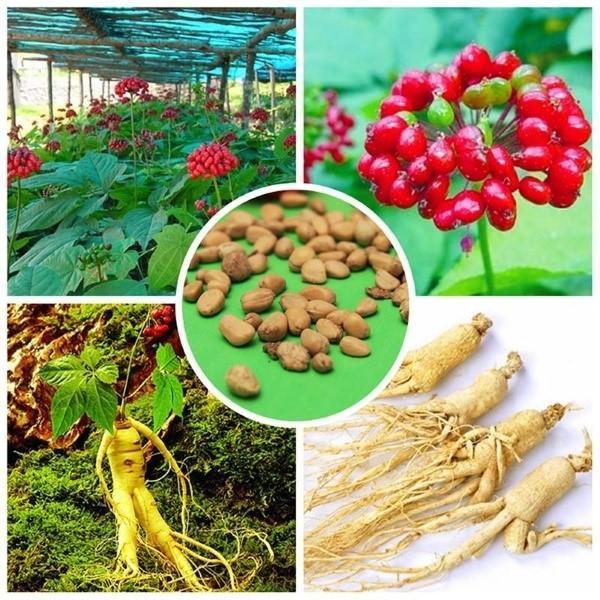Growing ginseng from seeds - the subtleties of the process

Growing ginseng from seeds is a profitable business, although it will take a decent amount of time. Seeds are several times cheaper than already ready-made seedlings, which is already an undoubted advantage with mass landing. If you are willing to wait, you will have recouped the costs of the planting by the fourth year. material by collecting the first crop of their own seeds. And after a couple of years, ginseng will delight you with large valuable roots. But to get pleasure and benefit, you need to know what this crop needs when grown on private plots.
Growing ginseng from seed - when and how to sow
You can plant seeds for seedlings:
- in spring, starting in mid-April;
- in the fall, in October.
Regardless of when the disembarkation is planned, the garden must be prepared in advance. It is better to take the top layer of forest land (along with deciduous litter) as the basis for the soil mixture.
For a balanced composition, you need to add to it:
- fallen leaves from the garden;
- wood dust from rotten stumps;
- old sawdust;
- well rotted mullein;
- river sand;
- ash.
The location for the ginseng should be located away from groundwater, with good drainage that does not flood in spring.
When planting, it must be borne in mind that the beds should not be deep - it is enough to make grooves 5 cm deep.Ginseng seeds are large, so there will be no problems with landing. They just need to be laid out in the groove, leaving a distance of up to 5 cm.If there are several beds, the width should be observed row spacing about 15 cm.
Development features ginseng and caring for it
The first seedlings are usually shown at the beginning of May. They have a very interesting appearance in the form of a white loop. She over time straightens and leaves begin to form. For the first year of life, seedlings ginseng grow by only 7 cm, forming a thin root weighing no more than 1 g and up to 15 cm long. The first flowering of the plant will come only at the age of 4 years. IN June, delicate white flowers bloom over the bushes, collected in small inflorescences. Ginseng blooms for about 2 weeks, after which it is tied fruits in the form of rounded berries. In August, they ripen and turn red, after which ready to collect.
In general, ginseng is not particularly demanding if you make sure that it grows in the "right" place and is properly looked after.
When growing ginseng from seeds, you should pay attention to the following points:
- Lighting. Ginseng is very picky about light, but not about its abundance, but vice versa. Light should be transmitted (diffused), and no more than 30% per day. To do this, it is advisable to make wooden sheds over the beds, placing them at a height of 1.5 m from the bed with a slope from north to south. It is also worth surrounding the beds with similar shields from all sides, except for the north. The older the plants, the more light they need, but young seedlings need extra sun protection. To provide it, for the first time spruce branches are laid on top of the shields.
- Watering. In dry and hot weather, be sure to do this once a week. If the summer is cool and with rains - and even less often. The consumption rate is up to 10 liters of water per square meter.
- Mulching. Foliage or sawdust poured into the beds will help retain moisture. In addition, they serve as protection for the roots in winter.
- Preventive treatment for diseases. For the whole season, it is advisable to spray seedlings with a solution of potassium permanganate twice (in May and June).After this treatment, you will need another spraying, but with water. Another treatment should be done at the end of the season using Bordeaux mixture.
- Preparation for wintering. For the winter, the aboveground part of ginseng dies off, and only the root remains in the soil for the winter. After wilting, at the end of October, you need to cut off the stem. After the first frost, a thick layer of leaves or sawdust should be poured.
- Transfer. Upon reaching the age of 3, the seedlings must be transplanted to a permanent place. In the middle lane, this can be done in October. At this time, the thin seasonal roots die off, and the transplant process is less painful. More distance should be left between the bushes (up to 25 cm). At the same time, they must be laid almost horizontally, deepening the growth point by 5 cm.
It will be possible to harvest in the form of medicinal roots start in the fall and only at the 7th year of plant life. You can do it earlier, but then the roots will be thin and with fewer nutrients. For active growth of the root system, peduncles should be cut off in time, so they don't take power away. If you need to get seeds for further reproduction or implementation, part of the ovary is left.